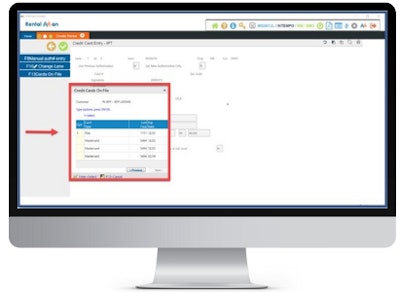
Sponsored by: InTempo
When you create a new rental contract, how do you process the payment?
Do you start the reservation in your rental software, go to a separate application, key in the card number and security code, and go back to your primary system to finish up the transaction?
Do you have to call the customer to ask them for their payment details, even if it’s a customer you’ve worked with hundreds of times before?
Do you write the card number down on a sticky note to deal with later in the day?
If any of these scenarios sound familiar, you’re making the process much more complicated than it needs to be.
Faster, Easier Payment Processing
With integrated payment processing, you can charge a customer’s credit or debit card without leaving your rental software. You can start a reservation as you normally would, then run the transaction on your existing screen. There’s no need to launch a separate program or re-enter the transaction information into multiple systems.
There’s also the option of storing cards for future use. You enter a card once, then save it in a “wallet”. The next time the customer calls in to put a piece of equipment on rent, all you have to do is ask if they’d like to charge their card on file. No need to re-enter the card number and security code.
This can make payment processing much faster and easier – whether you’re taking the payment over the phone or at your rental counter. And if you’re using an e-commerce platform? You can use the same cards-on-file concept to create a digital wallet. Customers can choose a stored card when they check out, delivering a much smoother experience. On your end, the information is automatically updated in your ERP; no more wondering about the status of the payment.

Better Payment Security and Easier PCI Compliance
You’re in the rental industry – not the security industry. You shouldn’t have to take time away from your business to complete a long, complicated audit every year.
Unfortunately, if you accept credit cards or debit cards in any capacity, you’re required to be PCI compliant. That means – at minimum – an annual self-assessment questionnaire and a quarterly network scan. However, there are eight different self-assessment questionnaires. These range from the comparatively easy SAQ-A (24 questions) to the SAQ-D (328 questions.) If you’re able to take parts of your system out of scope for these assessments, you may be able to qualify for one of the shorter, easier options. Your team can check the compliance box within hours, rather than weeks or months.
Of course, you don’t want to cut corners when it comes to security – even if it does help with your compliance efforts. With more costly data breaches – and more sophisticated threats – making security more important than ever, you need to make sure you’re adequately protecting your customers’ data. After all – if someone were to access your system and steal a customer’s card number, you’re looking at some serious consequences. (According to IBM, the average cost of a data breach in 2021 was $4.24 million.)
When you integrate payments into your rental software, it’s crucial to work with a PCI-Validated Service Provider. This means that the company you’re trusting with your customers’ data has completed a recent third-party audit on the measures they use to keep that data safe. You can check a company’s PCI validation status on the VISA Global Registry of Service Providers.
One specific measure a service provider should be using to keep your data as secure as possible? Remote tokenization. This is a process that replaces sensitive card data with randomized values, without allowing the visible data to exist on your system. Your service provider processes and stores the data for you in an off-site vault; it never actually touches your environment. When you want to charge a card on file, you don’t use the physical card number. Your counter staff references the remote token; your payments platform takes care of the rest. If someone were to breach your system, the only thing they’d find are unusable, unencryptable tokens.

Lower Payment Processing Fees
Of course, if you’re going to go through the process of changing your payment processing system, it has to make financial sense for your business.
One way that you can reduce your overall costs? A system that supports Level II and Level III transactions lets you pay less every time you process a corporate purchasing card. If you primarily rent to contractors, this can add up to hundreds – if not thousands – of dollars per month.
There’s also the potential to lower your fees even further with a pre-negotiated group rate. It’s similar to the concept of insurance: pricing goes down when the number of customers (or in this case, the number of transactions) go up. When you adopt a platform that has a pre-negotiated rate with an acquirer, you can take advantage of their economy of scale.
Learn More about Integrated Payments
Curbstone has worked with some of the nation’s largest rental organizations, developing native payment integrations for their existing software. No matter what rental software you use, we can integrate payments into your existing applications. More importantly, full support for your unique rental transactions – including periodic invoicing/cycle billing, cash customers, cards on file, and credits/refunds – lets you easily accommodate all of your existing business processes. You don’t have to change the way you work.
To learn more about seamless payment processing for the rental industry, contact Curbstone.










![Building Angled Sm Edit 6050b8d213f1b[1]](https://img.forconstructionpros.com/mindful/acbm/workspaces/default/uploads/2025/09/building-angled-sm-edit6050b8d213f1b1.Ygq5aAos3b.png?ar=16%3A9&auto=format%2Ccompress&crop=focalpoint&fit=crop&fp-x=0.53&fp-y=0.23&fp-z=2&h=135&q=70&w=240)








